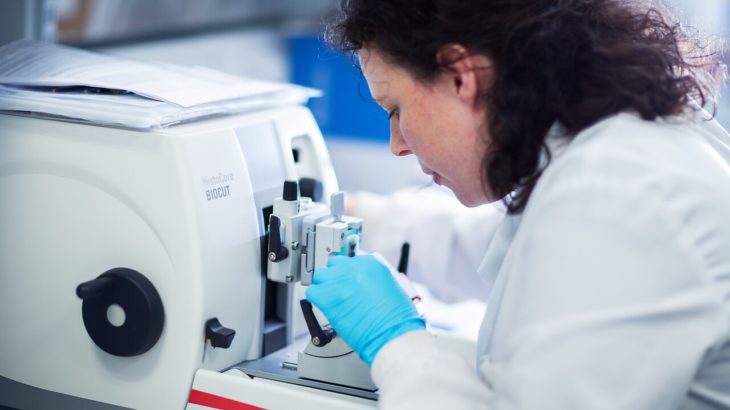What Spending Review 2021 means for science and engineering

With public investment in R&D set to rise substantially to £20bn as a result of the Autumn Budget and Spending Review, the Campaign for Science and Engineering’s James Tooze takes a look through what the Chancellor’s announcements mean for science and engineering.
Yesterday’s Autumn Budget and Spending Review means that public investment in R&D is set to rise substantially to £20bn by 2024/25, a 34% increase from 2021/22. However, this settlement falls short of the UK Government’s own ambitions of reaching £22bn by 2024/25, with this target now being pushed back to 2026/27 and into the next Parliament. I look through what we know, the questions that remain, and what this means for the UK’s endeavours to become a more research-intensive nation.
What do we know?
This year’s Spending Review provided budget allocations for the next three financial years, the first multi-year budgetary event since 2015. During his speech, the Chancellor said that creating a high skill and innovative economy is the ‘only route’ to securing UK prosperity, and outlined how science, research and innovation is central to this endeavour.
This renewed focus on R&D is very welcome, not least by me as it now commands its own section within the lengthy Treasury documents. Hopefully, this table answers some of the bigger questions relating to science, research and innovation funding in the coming years.
| £ billion (current prices) | 2021-22 (Current) | 2022-23 | 2023-24 | 2024-25 |
| Total UK public expenditure on R&D | 14.8 | 16.1 | 19.4 | 20 |
| Department for Business, Energy and Industrial Strategy | 11.3 | 11.9 | 13.7 | 14.2 |
| of which: Core Research | 4.8 | 5.2 | 5.8 | 5.9 |
| of which: Innovate UK | 0.7 | 0.7 | 0.8 | 1.1 |
| of which: EU Programmes Association | 1.3 | 1.2 | 2.3 | 2.1 |
| Department for Health and Social Care | 1.4 | 1.5 | 1.5 | 2 |
| Other UK government departments | 2.1 | 2.8 | 4.1 | 3.8 |
| R&D Official Development Assistance | 0.6 | 0.8 | 0.9 | 1 |
The overall public envelope for R&D will increase by just over £5bn over the next three years, with increases right across UK government departments and funding bodies. ‘Core research’ refers to the seven constituent Research Councils of UK Research and Innovation and Research England, which will see an overall budget increase of £1.1bn, with the Innovate UK budget increasing by over 50% over the next three years. The details of how these increases will be allocated will be subject to negotiations between the Department for Business, Energy & Industrial Strategy (BEIS) and UKRI in the coming months.
The Spending Review also revealed significant increases to departmental R&D budgets, something that CaSE has been calling for since drastic cuts in 2010. Increases to R&D funding for the Department for Health were trailed in the press last week, but the spending review announced a growing pot of funding for other UK government departments too.
To optimise this period of rapid expansion, decisions over how to invest this additional funding will need to support existing strengths in R&D
James Tooze, CaSE
Another positive budget line is the emergence of the multi-year commitment to meet the full costs of associating with Horizon Europe. The settlement for Horizon Europe has been separated from all other budget lines meaning that it will not affect domestic funding programmes, despite the fact that the money will come from the BEIS R&D budget when it previously came from the UK’s overall subscription to the EU. This development is also a welcome confirmation that the UK remains set on associating with Horizon Europe and we hope the formal ratification process can conclude soon.
What about reaching 2.4%?
Despite the £22bn investment target for 2024/25 slipping back to 2026/27, the UK Government’s intention to reach a research intensity of 2.4% of GDP by 2027 remains. Updates to GDP growth published alongside the Budget and Spending Review show that UK GDP growth will increase faster than forecast in March 2021. Updating our projection model with these figures shows that the UK’s research intensity would reach 2.33% of GDP in 2027.

We estimate the UK’s current research intensity to be 1.94%, which would rise to 2.16% in 2024/25 and then to 2.33% in 2027/28. Our modelling shows that despite falling marginally short of the 2.4% target by 2027, the combined growth in public and private sector R&D investment would generate the most significant increase in UK research intensity on record. To optimise this period of rapid expansion, decisions over how to invest this additional funding will need to support existing strengths in R&D, whilst also looking strategically to the future.
Given the two-year delay to the £22bn target, the Government must continue to signal its long-term commitment to R&D towards private enterprise and business. I have previously looked at the targets and goals set by other R&D intensive nations, and the UK will be competing for globally-mobile R&D investment. Not only does private investment play a key role in reaching the 2.4% target, but it is vital in providing jobs and facilitating local and national economic growth.
What are the questions that remain?
Reviewing our five point roadmap for the UK to become a science superpower, one aspect that still has few answers is the state of the new UK Shared Prosperity Fund (UKSPF), intended to replace EU Regional Development Funding (ERDF). Despite stating a headline figure of reaching £1.5bn a year by 2024/25 and confirming that each UK region will receive at least the same levels of funding previously enjoyed from the EU, there was little to no detail about what the UKSPF will fund. ERDF played a crucial role in supporting R&D capacity and capabilities across the UK, in particular in Wales and Northern Ireland, and it is imperative that the UKSPF continues to fund research and innovation. The Levelling Up White Paper should be published before the end of the year, which will set out how the UK Government plans on increasing opportunity and productivity in all areas of the country, and we hope more detail on the UKSPF will be set out.
This piece originally appeared on the Campaign for Science and Engineering website as CaSE analysis of 2021 Spending Review


